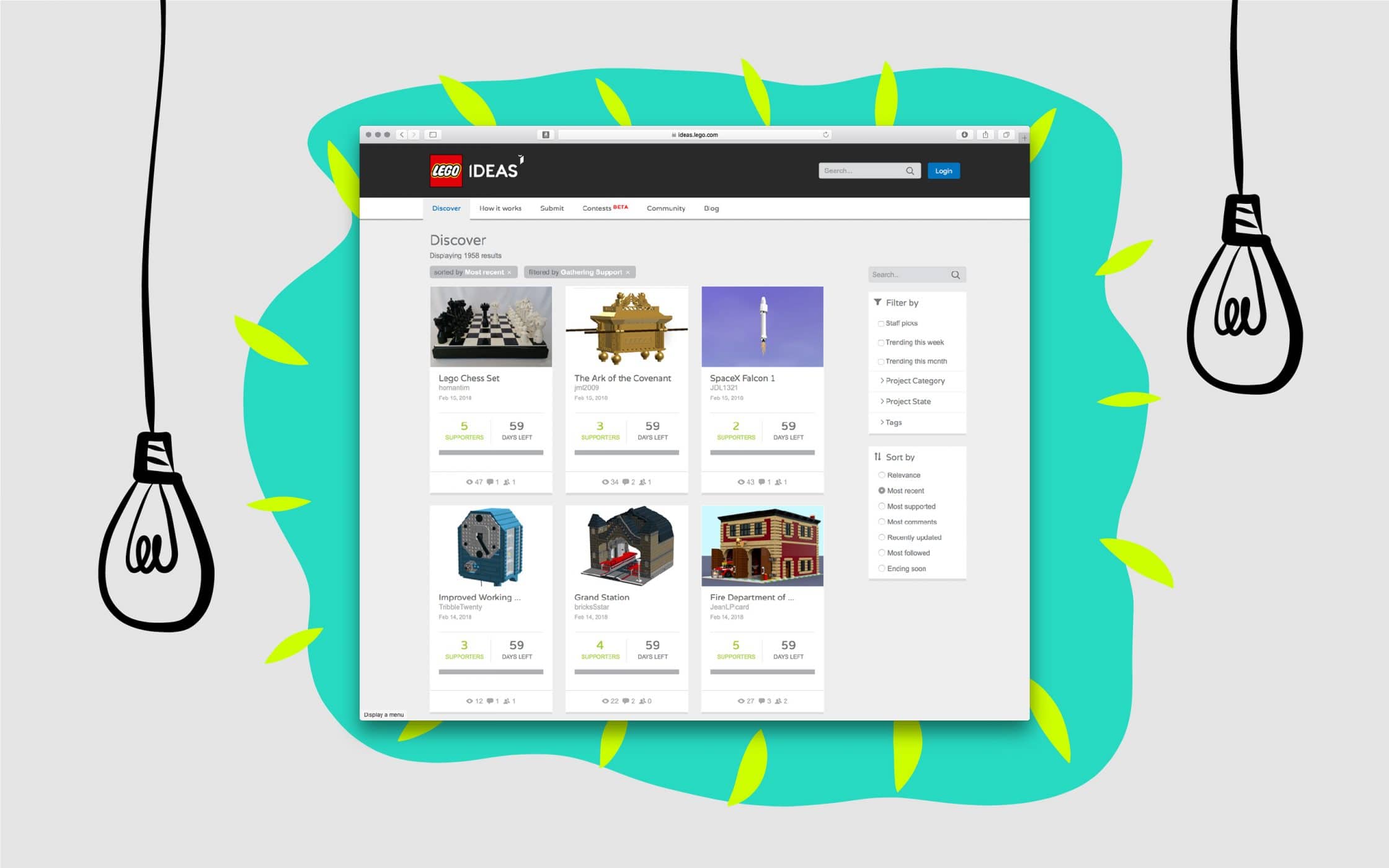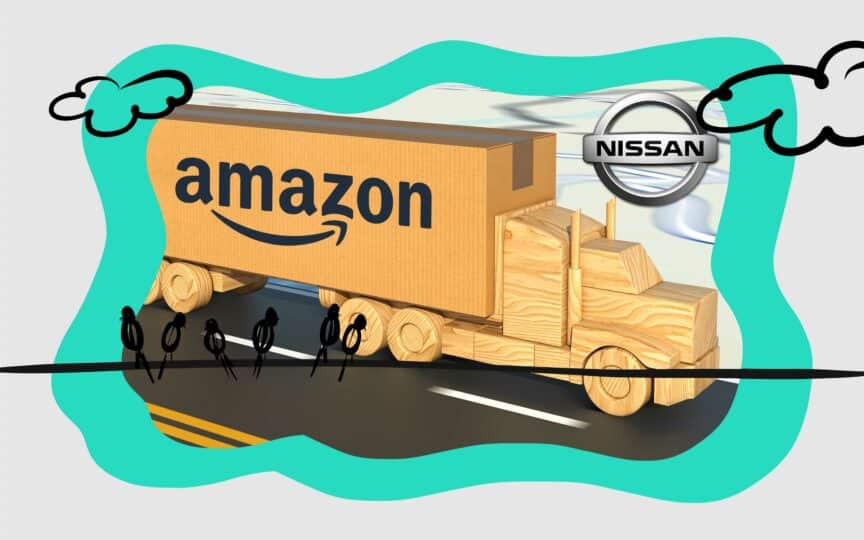All shook up: Disruptive marketing techniques for the non-conventional marketer

Sometimes, the traditional way of doing something isn’t always the best option. As reassuring as it might be to hold onto best practices and tried-and-tested strategies, sometimes rules really are there to be broken. At least – that’s the mindset of the disruptive brand.
“Disruption” is a word we’ve begun to hear in many industries of late. Whether it’s the disruptive AI technologies changing the computing environment, or the mind-blowing transformations in the health and fitness sector, human beings are always looking for ways to change, and evolve. Disruptive marketing techniques allow brands to tap into this desire for change and implement it into their vision for long-term success.
A disruptive marketing strategy is your opportunity to take the marketing rules you’ve lived by for the last decade and throw them into the trash. It’s about moving past the “tried and true”, and exploring the risky, but new.
Since today’s consumers prize once-in-a-lifetime experiences above everything else, disruptive marketing offers fast-pass access to brand loyalty for companies who aren’t afraid to do something new. That’s why businesses everywhere are racing to become the next Uber, Amazon, or Airbnb. Disruption breeds buzz.
The right disruptive marketing campaigns can even help you to repair and overhaul your brand reputation – improving company perception and paving the way for bigger and better sales. The question is, how do you become the next industry disruptor?
Making a splash: Where did disruptive marketing come from?
Whenever there’s a “status quo” in the world, there’ll always be someone who wants to rail against it. To some people, these individuals are innovators – for others, they’re anarchists – it depends entirely on your point of view. Before disruptive marketing techniques were an exciting part of the branding world, we were already seeing disruptors make their mark in our day-to-day lives.
Every industry innovation we’ve had since the dawn of time has been a “disruption” to the traditional standard. For instance, the computer, the telephone, the smartphone, and even the electric car are all examples of disruptive products. The actual term “disruptive innovation” however, was only established by Clayton Christensen, a Harvard Professor, in 1997.
Christensen considered “disruption” to be a process through which a small fish in an industry pond could successfully challenge a pre-established shark. For instance, Uber came in as a tiny company and challenged the global concept of taxi cabs – disruption at its finest. Another example is Netflix, a streaming brand that came out of nowhere to completely transform the way we access entertainment.
For some companies, disruptive marketing is about making the world more accessible. For instance, Airbnb decided that it should be easier for people to travel around the world on a budget, so they created an alternative to the standard hotel. For other organisations exploring disruptive marketing campaigns, the purpose of disruption is all about fighting back against a social or economic injustice – like Lush standing up for cosmetics that avoid animal testing.
Perhaps the most compelling feature of any disruptive marketing strategy is the fact that it will always be unique to the brand that creates it. That means that when it’s used correctly, linked with your company voice, and connected to your overriding image, your disruptive marketing plan could be the key to a brand’s differentiation strategy.
After all, while other people might try to duplicate your idea, a truly disruptive brand will create an image that no-one else can duplicate.

Advice for anarchy: What makes disruptive marketing campaigns special?
So, how can you design your own disruptive marketing techniques?
Good question.
Disruptive marketing isn’t as simple as it seems. There are hundreds of different types of marketing out there, so if you’re going to do something new, you can’t just push the envelope – you need to tear it up entirely.
If that wasn’t challenging enough, there’s always the risk that your efforts to do something different won’t turn out the way you hoped. Even if everyone responds to your request for change in a positive way, it might take a while for you to find your real voice. However, if you can discover your disruption opportunity, then it could be the key to transforming your brand. For instance, if we go back a while to the 1990s, it might surprise you to learn that Apple wasn’t exactly a leading technology company.
When Apple first launched, it was nothing more than an over-priced, and somewhat boring technology brand in the eyes of many customers. It was only when Apple introduced the concept of an MP3 player at a time when most people were still walking around with discmans that the company began to earn some real attention.
Here are a few more examples of how disruptive marketing campaigns can transform and elevate the perception of a brand.
1. Toyota: Making cars fun
Historically, automobile advertisements have been all about showcasing innovation and sophistication. Car companies don’t generally have a great reputation for fun. However, Toyota chose to change all that when they used disruptive marketing techniques to design an ad talking about cars “fueled by bullsh*t”.
The ad campaign came out in 2015 and was an exciting way for the car company to show its fans that it can have a sense of humour. Not only was the ad funny, but it also acted as evidence to suggest that Toyota is taking additional steps towards its mission of creating more sustainable cars.
2. Nike
When it comes to disruptive marketing strategies, Nike is one of the masters. They’ve transformed the way people think about health and fitness, empowering individuals around the world to become athletes in their own right.
In 2015, they launched a campaign called “Better for It” on YouTube. The disruptive marketing campaign followed a pair of adopted sisters, Lily, and Margot. Nike’s goal with this campaign was to deliver a relatable experience to their customers, showing that they’re not just a brand for those who love to sweat – but also a company willing to support those who are less athletically minded.
The thing that makes Nike’s marketing campaign so appealing, is that it doesn’t push any products or aggressively try and get followers to buy something. Instead, it provides a realistic portrayal of what it feels like to work out – particularly when you struggle to find motivation to exercise.
3. HBO
Finally, entertainment experts HBO launched their own disruptive marketing techniques in 2015 when they decided to create the “HBO Go” platform, which allowed subscribers to watch their favourite shows on the go – from any device. The series of ads that followed showed families coping with the awkwardness of watching risqué, graphic, or gory scenes together and suggested that it might be a better idea to use the privacy of HBO Go instead.
While the HBO product might not have been entirely disruptive, the ad was very unique in that it avoided going down the obvious route of demonstrating how convenient it can be to watch your shoes whenever and wherever you want to.
That’s exactly what disruptive marketing campaigns are all about – recognising the obvious option, and then deliberately going in the other direction.
Tips for your own disruptive marketing strategies
Today, the way customers react to, understand, and interact with companies has transformed. The age of the passive buyer is over, and your clients today have countless options available to them. Since it takes time to research a new company and paying for an unknown product can feel like a risky experience, today’s brands need to go above and beyond if they want their target audience to stand up and take notice.
Disruptive marketing campaigns could be the ultimate way to earn attention for your emerging brand, but how do you get started?
1. Do your research (understand both your industry & customer)
Before you can create world-changing disruptive marketing strategies, you need to know everything there is to know about the environment you’re trying to transform, and the people living within it. There are plenty of ways to learn more about the trends in your industry with things like BizStats and Think with Google. These tools will help you to begin assessing the gaps in your marketplace so that you can come up with an idea that’s entirely new.
Once you know what’s happening in your industry, you’ll need to start stepping into your customer’s shoes. This is where your buyer personas will come in handy. Remember, 72% of today’s customers say that they expect their favourite brands to understand their expectations and needs. Explore the minds of your audience and investigate any needs they might have that aren’t currently being served.

Take LEGO, for example, they don’t just design creative toys for children – they’ve designed a product that has emerged as a desirable, collectable item for people of all ages. How did they do this? By speaking to their audience.
The online “LEGO Ideas” community is a place where members can go to share their ideas, submit unique designs, and speak to other would-be designers. If a project receives more than 10,000 votes, it could be picked by LEGO to become an official part of the product portfolio.
2. Be honest, and transparent
We’re shifting from “producer-led” paradigms for sales, into “consumer-led” models. In other words, your customers have more power than ever before. They decide who they want to do business with from an ever-growing list of competitors, and they can research each brand they’re considering working with.
In a world where nothing is “secret”, and everything is social, it’s important to make sure that you can appeal to your new, highly sceptical audience. You can no longer just push your messages at your customers and expect people to trust you – instead, brands need to build an affinity with their customer through transparent, and honest behaviour.
When looking for a way to launch your disruptive marketing techniques, remember that everything you do should link back to your unique values and visions as a company. If something you do doesn’t work out, you’ll need to be prepared to stand up and apologise.
3. Do something different (but meaningful)
Perhaps one of the most important things you’ll need to remember when you’re designing your disruptive marketing campaigns is that while your aim is to do something that will help you to stand out from your competitors, that doesn’t mean that you should just be different for the sake of it.
Your disruptive marketing strategies should introduce the world to something that they’ve never seen before, but at the same time, give them something of real value. For instance, creating a fork that dissolves in hot food would be new, but it wouldn’t be useful to anyone.

Of course, you’ll need to assess your marketplace, and your customers to figure out what “disruptive marketing” might appeal to them. In an attempt to raise awareness for their brand, Nissan decided to turn the car shopping experience on its head. The “Versa Note” cars were offered to customers through Amazon’s website, and 3 of the 100 vehicles sold were packaged and delivered to customers in gigantic Amazon boxes.
The campaign was exciting and innovative, but it was also meaningful because it showed that Nissan was interested in making the car shopping experience easier for their customers.
4. Take a stand and fight for what matters
When your business first began, you may have chosen a “purpose” for it – something that you want to achieve based on your values, and the ideals of your target market. Standing for something that matters to your customer is one of the easiest ways to amplify your brand voice in this over-saturated marketplace. Remember, taking a stand can help you to rally for the community support of your customers, and create a sense of affinity.
A very popular example of a brand that’s taken a stand in the past is “TOMS” shoes – a business that makes an astronomical effort to help people around the world with their basic needs. Every pair of shoes you buy from TOMS changes the world because the company sends a child in need a new pair of shoes as a celebration.
Your company probably won’t have the means to do something this astronomical when it comes to corporate social responsibility, but that doesn’t mean that you can’t be passionate about a cause and use your disruptive marketing strategies to show that you’re willing to stand for something.
5. Stay true to yourself
Finally, perhaps the worst thing that any brand can do when developing disruptive marketing strategies, is to get so caught up in making a splash, that they start creating campaigns that no longer represent their company or values. The more disruptive you are, the greater your following will become, and they expect you to showcase the same distinct characteristics that they fell in love with when they first recognised your company.
Whenever you’re planning to do something new with your disruptive marketing techniques, take a few minutes to glance over your brand manifesto or internal company guide to ensure that you’re sticking to your underlying visions. Just because you’re disrupting your industry doesn’t mean that your brand should be confusing and disjointed.
Consistency will always be key to building a stronger brand. Make sure that your quest for industry volume doesn’t cause you to lose your unique voice.

Why customers respond to disruptive marketing techniques
Building a disruptive brand is no easy feat.
Coming up with an incredible and world-changing set of ideas for your advertising campaigns takes a great deal of time and effort. What’s more, the very nature of disruptive marketing means that there’s always a chance that something you do could rub your customers the wrong way. With so many risks, you might wonder why you would bother with disruptive marketing techniques in the first place?
The simple answer is that customers love disruptive experiences. Done correctly, your disruptive marketing strategies could turn you into a truly unforgettable business – bigger, and more adored than some of the major players in your industry.
Here’s why you should invest in disruptive marketing campaigns:
1. Customers talk about disruptive marketing
Disruptive marketing is designed to respond to a need in a marketplace that no-one else is serving. It speaks to customers on a new level or shows them something that they haven’t seen before – that makes it easy to connect with. You might remember a viral ad that saw some attention a while ago.
This ad was designed to raise attention for child abuse. From an adult’s height, the display advertisement simply read: “Sometimes child abuse is only visible to the child suffering it”. However, from a child’s height, it was possible to see another line of text, which said: “If someone hurts you, call us and we’ll help you.”
With disruptive marketing, you can start new conversations with your audience, and address persistent issues in creative ways. This starts chatter in the social space and draws more eyes to your brand.
2. Disruptive marketing can be affordable
A disruptive marketing campaign doesn’t have to be expensive to be powerful. Even if you change the way things are usually done only slightly – it can still make a huge difference. For instance, Airwick transformed the way we think about buying air fresheners. Instead of expecting you to simply go into stores and start spraying different bottles around, it allowed you to choose the scent that might be right for you with guided selling on its website.
The “Scent Decorator” feature allowed Airwick to recommend the perfect smell to their customer based on the kind of atmosphere they wanted to create in a room.
Adding something unique like a guided-selling solution to your website isn’t as expensive as running a worldwide billboard campaign, but it can still deliver better experiences for your audience, and therefore enhance your bottom line.
3. It’s easy to get behind
At the end of the day, disruptive marketing campaigns are the people in your life who are willing to say what everyone is secretly thinking – no matter how taboo or frightening it might be for the rest of us. Just look at the “ViPoo” product that’s emerged in the market recently, telling people that’s okay to be worried about the smells they leave when they go to the bathroom. In the past, no manufacturer would dare to talk about bathroom habits – no matter how universal they might be.
Another example of a company that’s transformed the industry by saying what we’re all thinking is the “Dollar Shave Club”. This company created a brand-new model for subscription-based selling, by designing disruptive marketing strategies around the fact that razors were simply too expensive.
The founders of Dollar Shave Club came together to fight back against expensive razors that made it harder for men and women alike to achieve a better, more consistent shave. Their efforts have already been quite successful, as Dollar Shave Club was purchased for $1billion by Unilever in 2016.

Do something new: Try disruptive marketing
Today’s business environment is a world away from what traditional entrepreneurs might expect. The strategy of hard-selling is over, and today’s most successful brands are making their profits by speaking to their customers instead and developing stronger relationships with the people they want to sell to.
The problem is, as more competitors arrive in the marketplace, it’s becoming increasingly difficult to ensure that your voice is heard above the noise. That’s where disruptive marketing strategies come in. According to one study, 90% of customers in the UK say that they’d prefer to engage with a brand that “sets new standards” or pushes the boundaries of what’s expected.
In a world of saturation and over-crowding, disruptive marketing creates an image that can’t be easily duplicated. Even if someone else does try to steal your voice, you’ll always be the first person to disrupt the industry in a new and innovative way – something like that makes your company impossible to ignore.
If you enjoyed this article, you might enjoy these too:
— When brands become a way of life…
— How to write a brand vision statement











